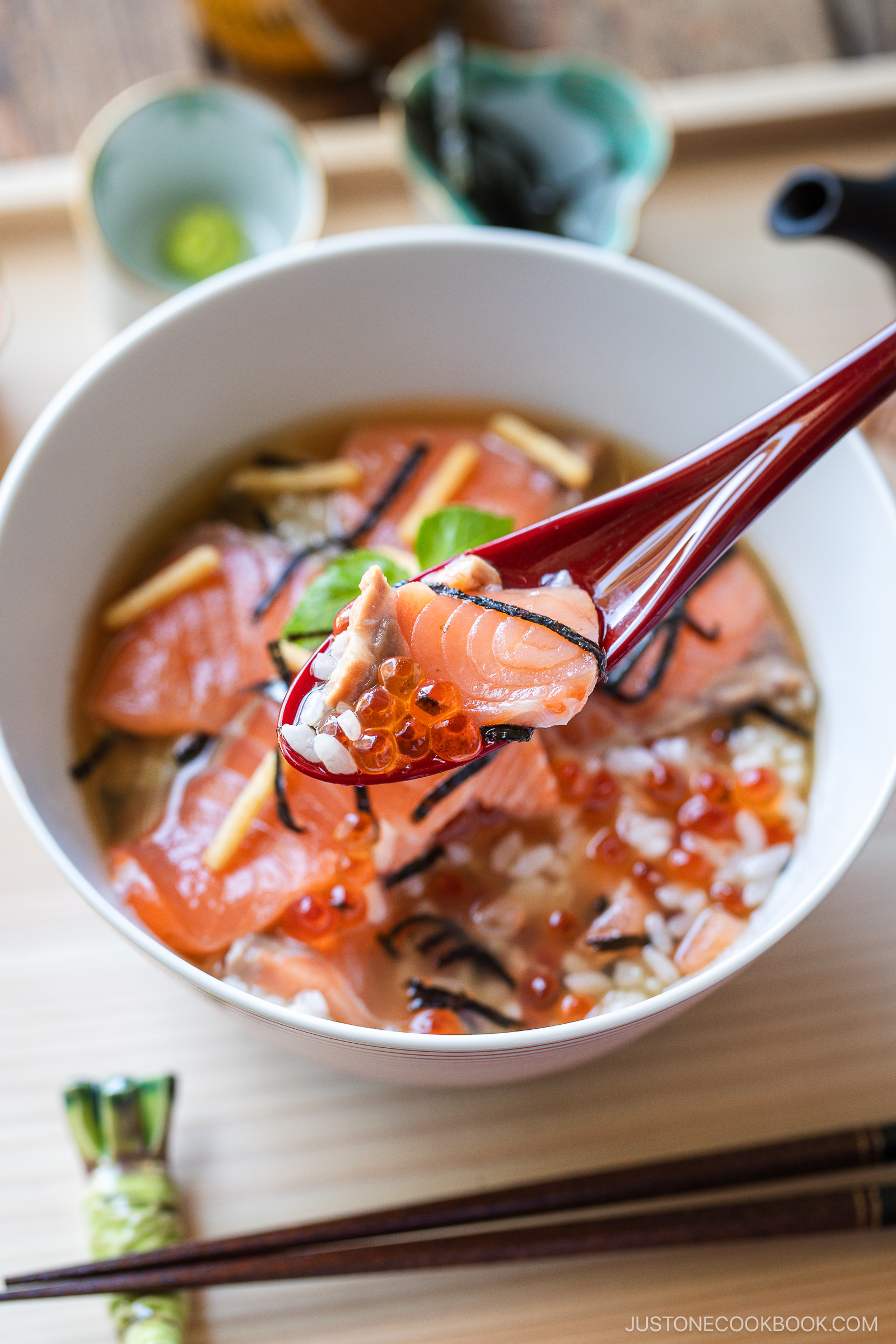
In my mind, ochazuke is the ultimate Japanese comfort food. It’s an elixir that soothes me when I’m exhausted after a long day, a bit under the weather, or feeling homesick for Japan. This savory and light Salmon and Ikura Dashi Chazuke recipe is one of my favorite takes, and it’s so easy to make in just 10 minutes!
Craving more salmon dishes? Try my Miso Salmon, Teriyaki Salmon, and Salmon in Foil next!
Table of Contents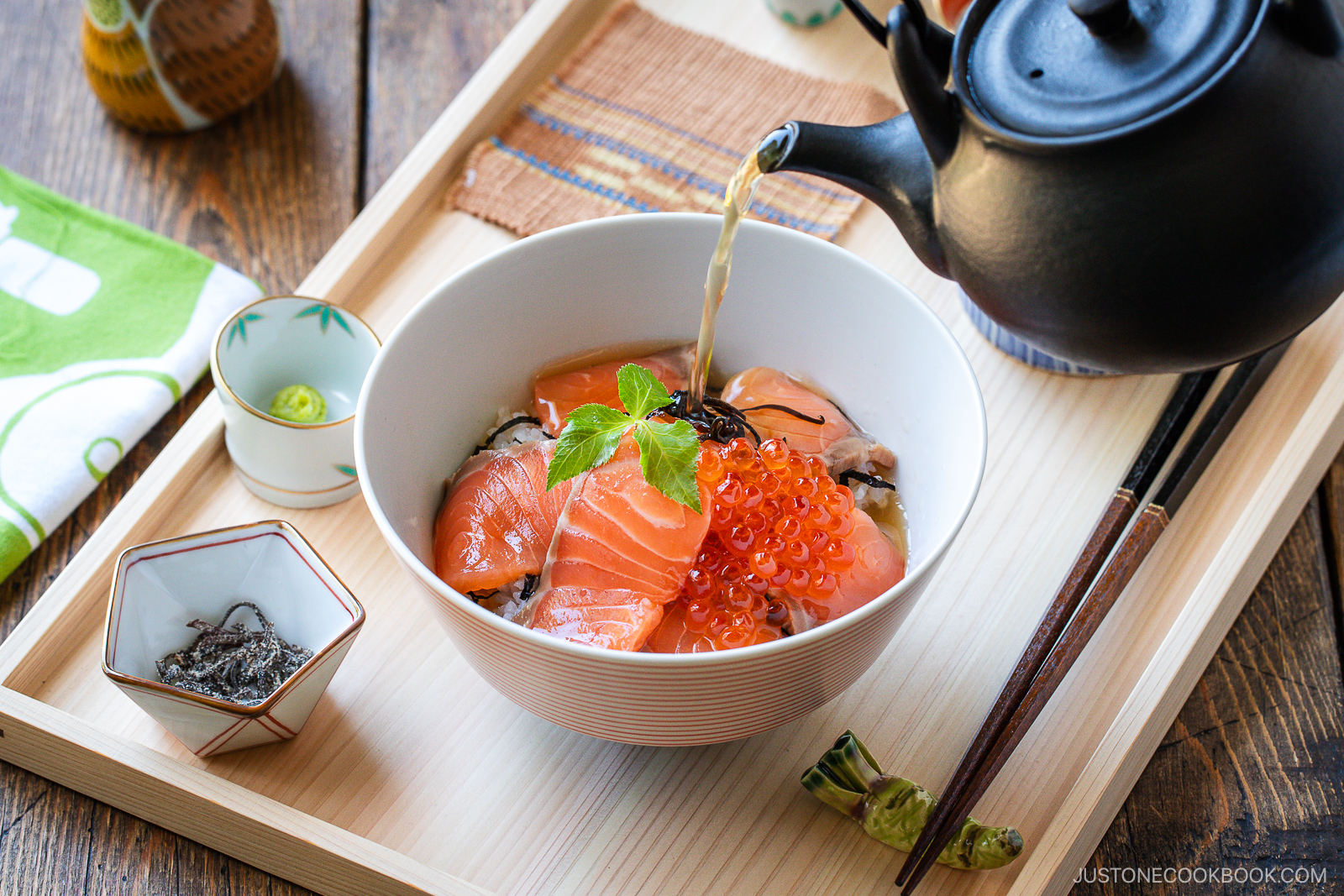
What is (O)chazuke?
Ochazuke (お茶漬け) is a one-bowl dish of green tea or Japanese soup stock (dashi) poured over steamed rice topped with assorted savory ingredients. Instead of proper mealtime food, it’s more of a quick homestyle dish or late-night snack that we pull together with pantry staples and/or leftovers. We often eat ochazuke when we’re under the weather because it’s mild, warm, and soothes the stomach.

Why I Love This Recipe
- Comforting and satisfying – With its nostalgic flavors, a bowl of ochazuke tastes like a warm and soothing hug.
- Quick and simple – It’s ready in just 10 minutes when you make quick dashi. Perfect for a midnight snack!
- Easy to customize – It’s a truly flexible dish, and you can change it up with your favorite ingredients. See my ideas below.
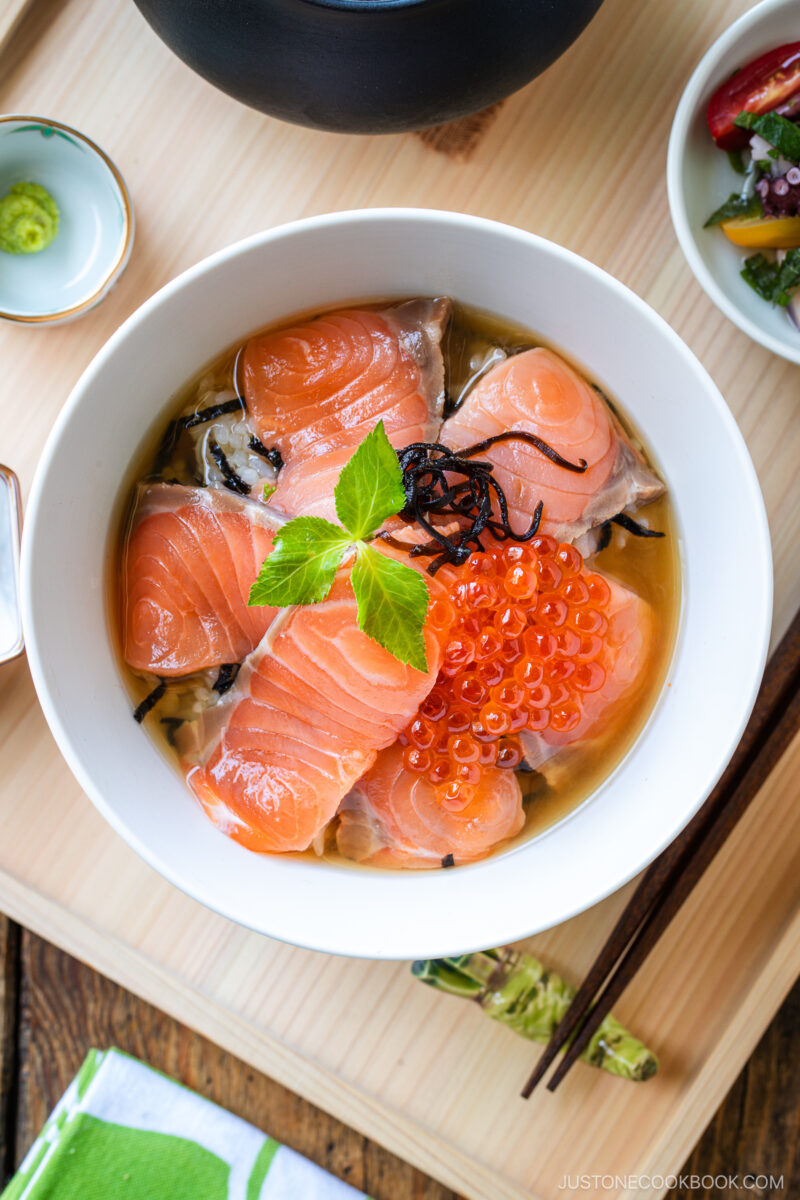
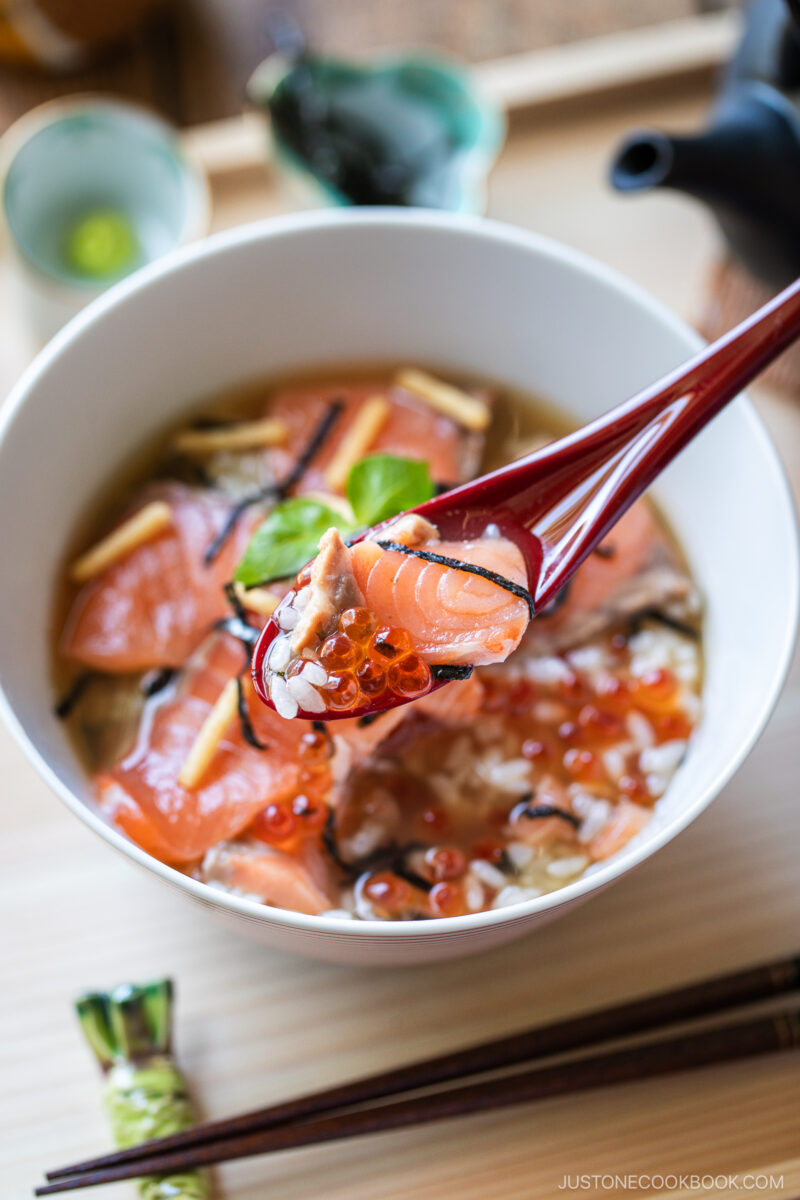
Ingredients for Salmon and Ikura Dashi Chazuke
- sashimi-grade salmon
- ikura (salmon roe)
- cooked Japanese short-grain rice
- seasoned dashi broth:
- dashi packet and water – or make Awase Dashi from scratch
- mirin – if you don’t have it, use 3 parts sake (or water) to 1 part sugar
- soy sauce – or use usukuchi soy sauce for a lighter broth color
- salt – optional, to taste
- optional toppings – shredded nori seaweed (kizami nori), shio kombu, and mitsuba (Japanese parsley)
Find the printable recipe with measurements below.
Jump to Recipe
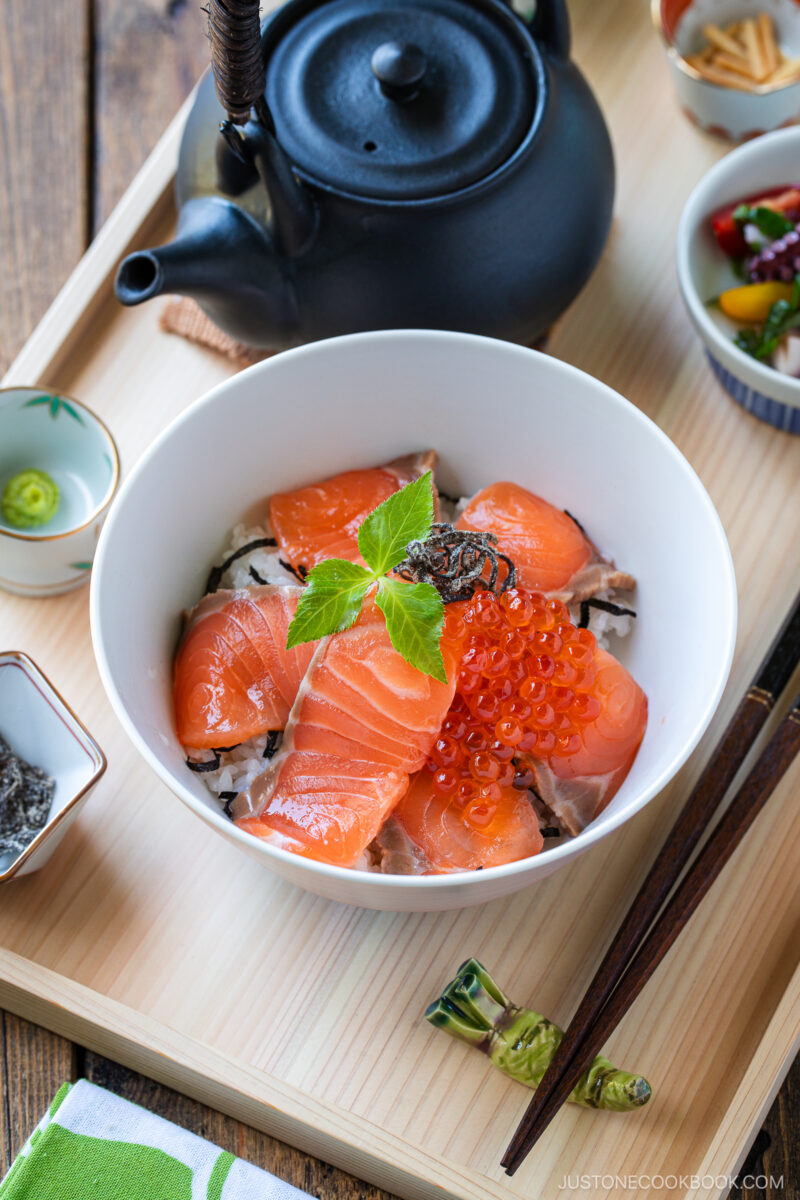
How to Make Salmon and Ikura Dashi Chazuke
Preparation
- Make the dashi. Boil water and a dashi packet in a medium saucepan for 2–3 minutes over medium heat. Squeeze out the liquid and discard the packet.
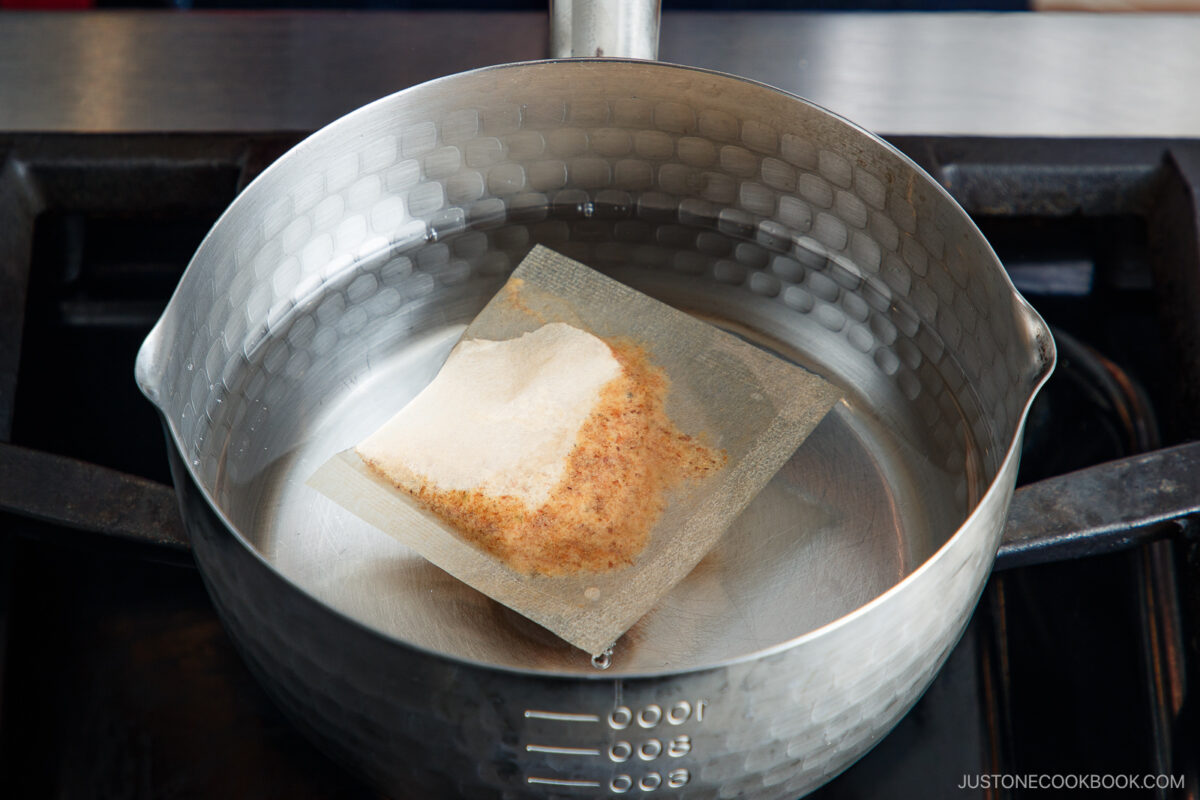
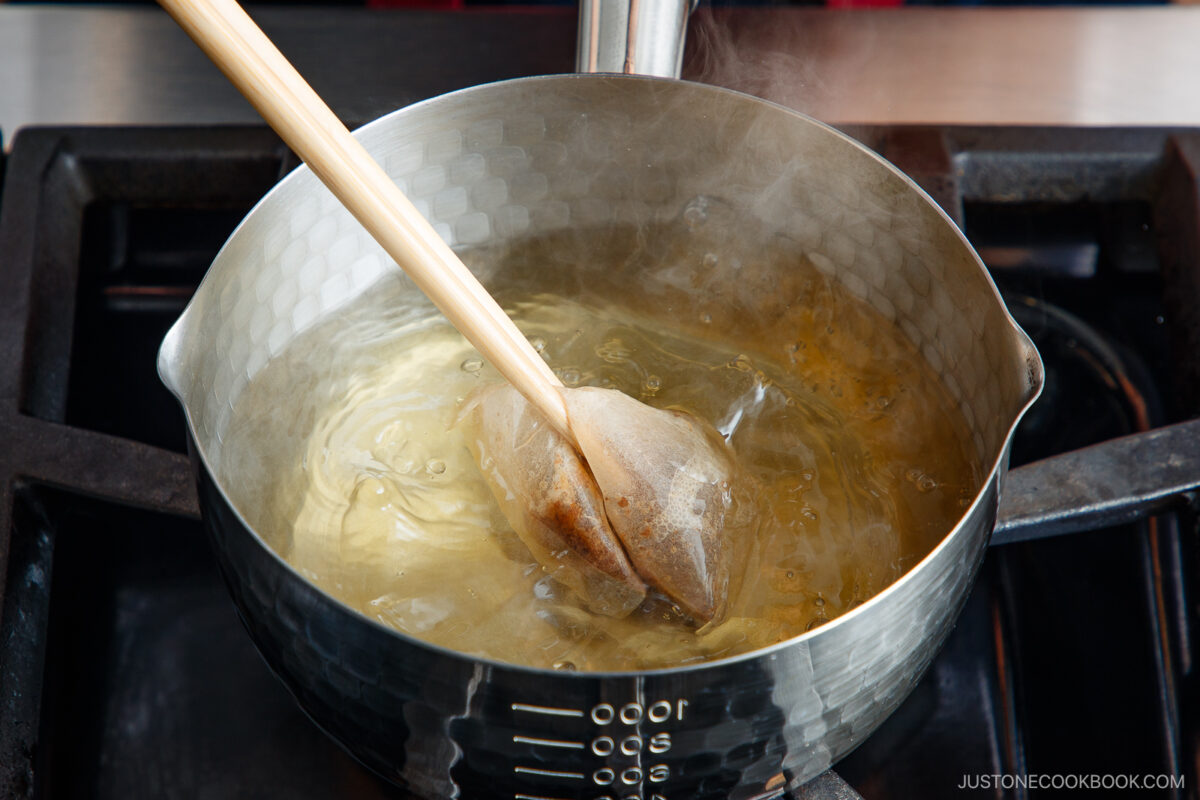
- Season. Add mirin and soy sauce to the stock (and salt, if using).

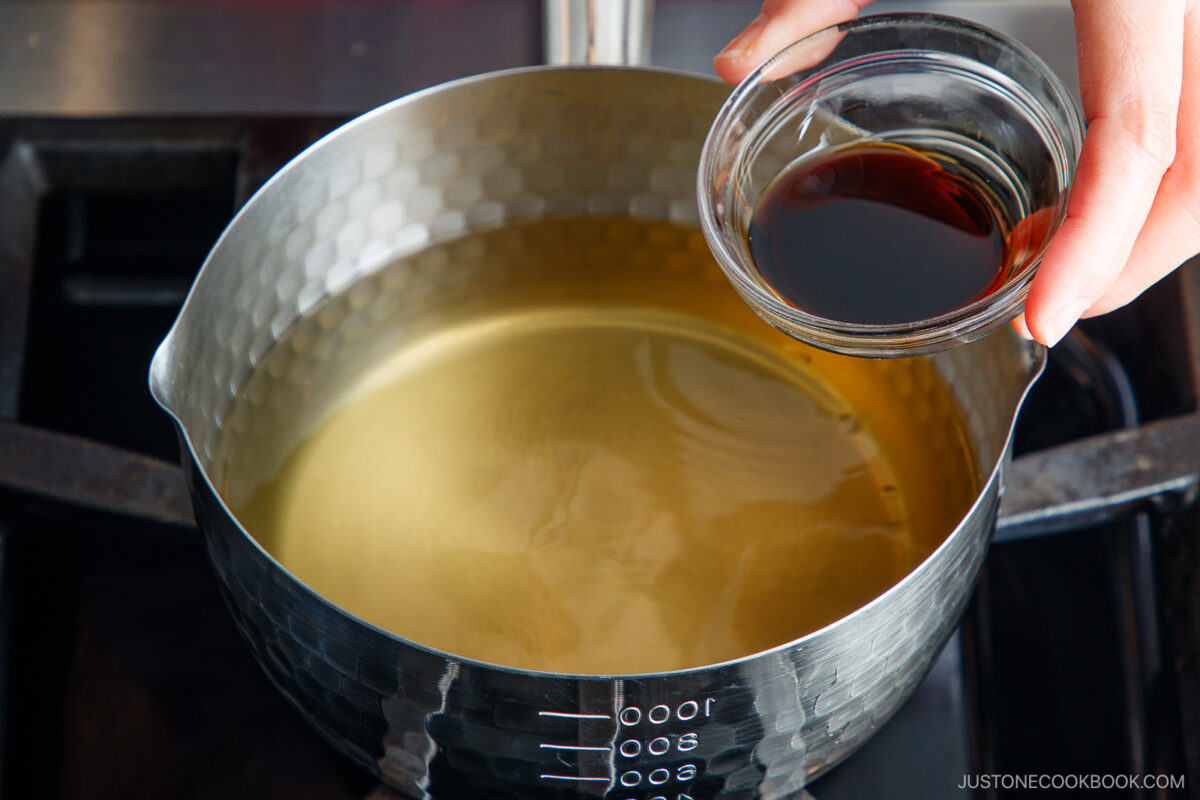
- Stir and transfer. Mix, then pour the seasoned broth into a teapot. Cover and set aside.

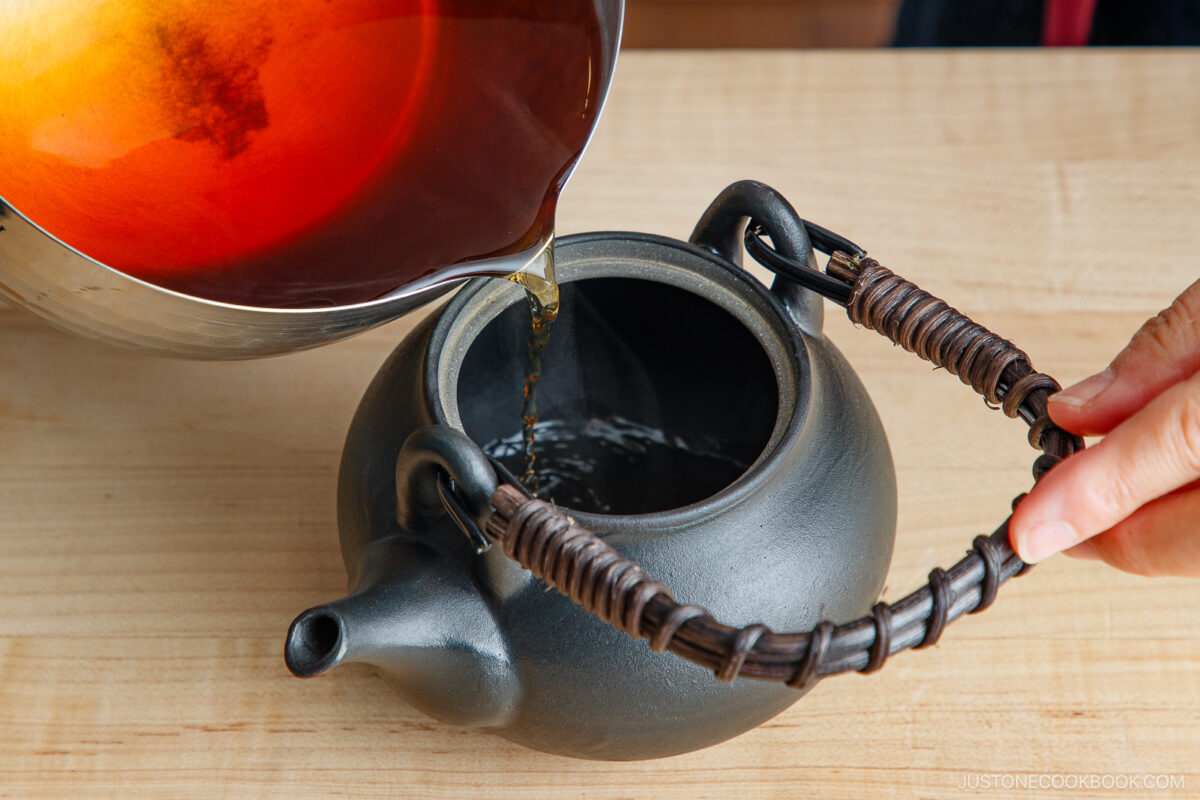
Assemble
- Slice the salmon. Add steamed rice to a large rice bowl (donburi) and sprinkle with shredded nori. Slice the salmon sashimi with a sharp knife.


- Add toppings and dashi. Layer the salmon on top, then add ikura, shio kombu, and a mitsuba sprig for garnish. Serve at the table, pour dashi to cover the rice halfway, and enjoy!
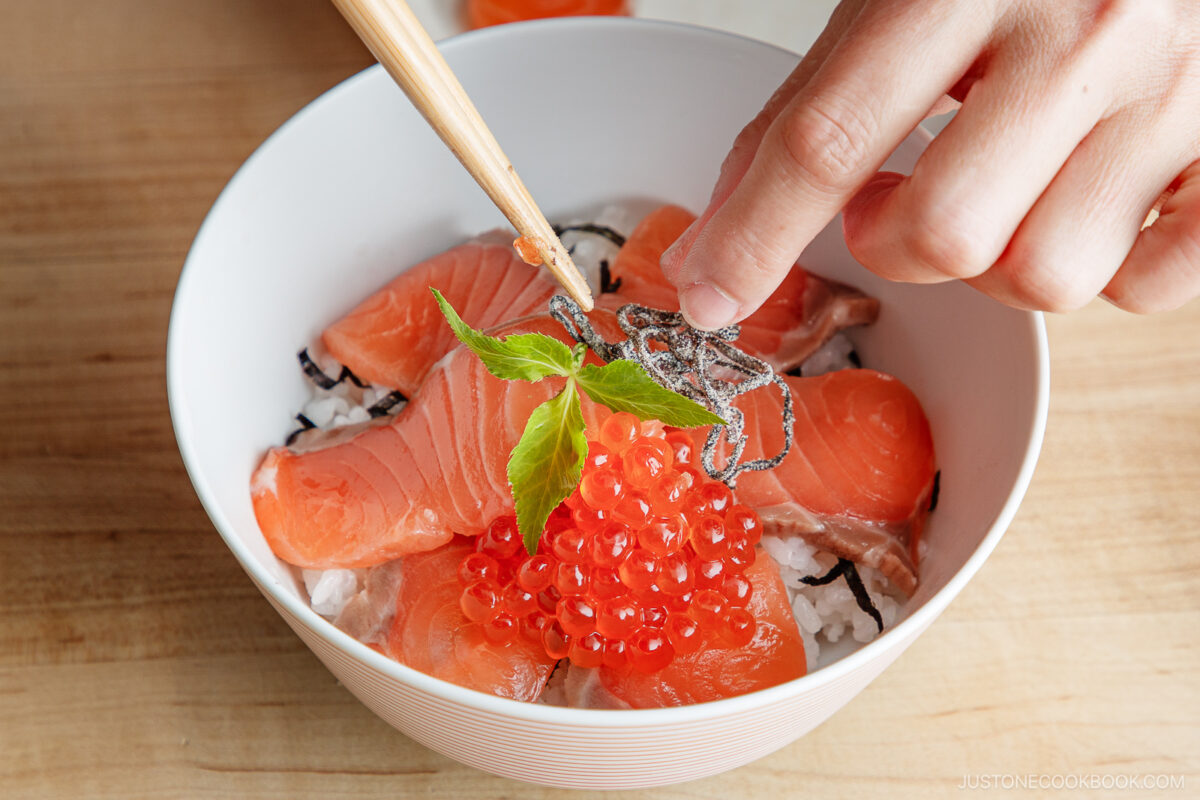
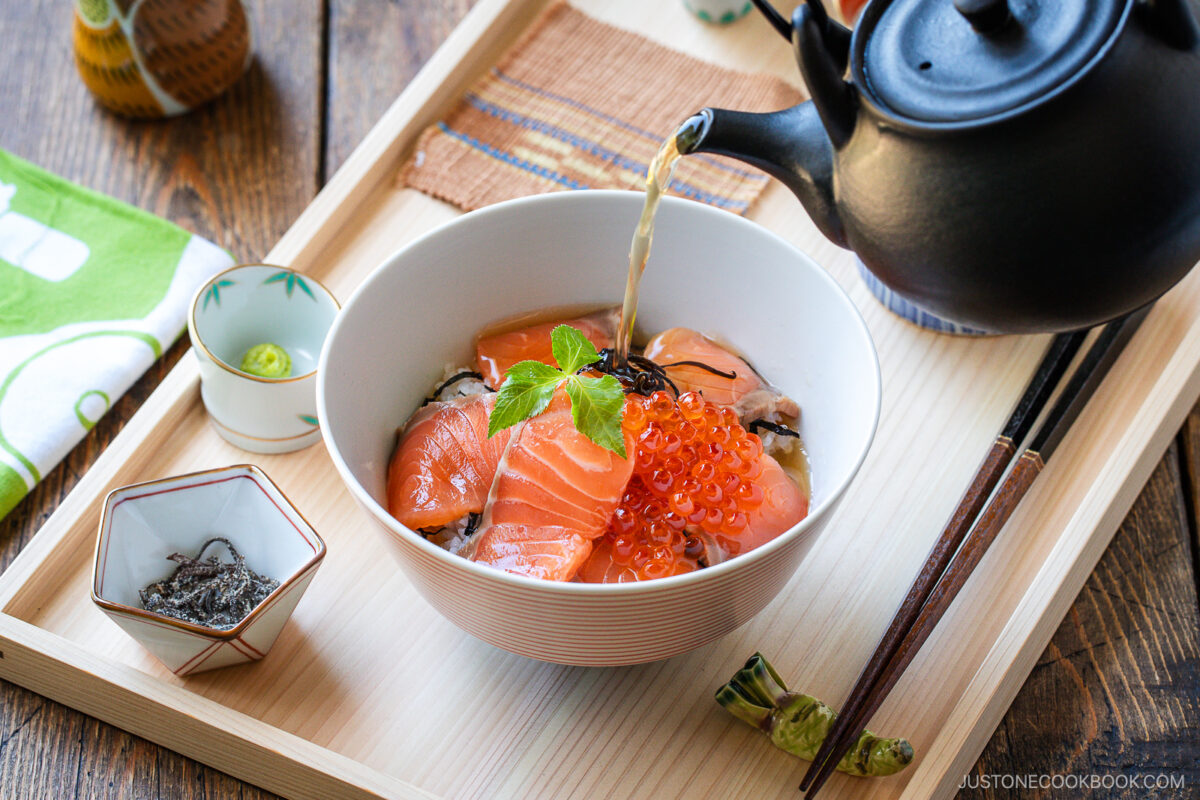
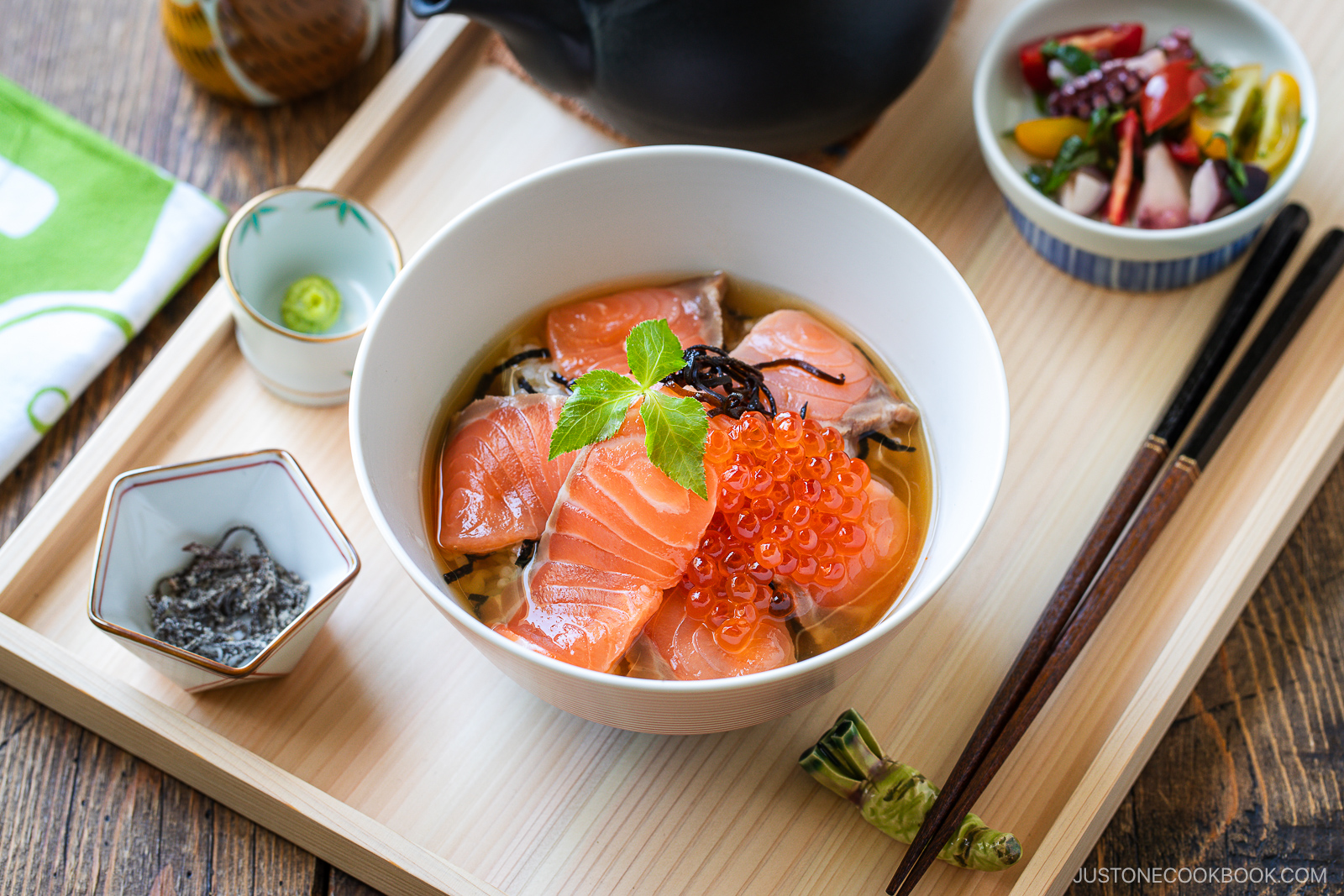
Nami’s Recipe Tips
- Steam the rice ahead of time – Make sure the Japanese rice is cooked and ready to go. Reheated frozen rice works here, too!
- Use sashimi-grade salmon and ikura – For reliable quality, visit the seafood counter of a Japanese grocery store. You can also order through Japanese & Asian ingredient stores online that sell sashimi and seafood.
- Firm up the sashimi in the freezer – Place the salmon block in the freezer for 5–10 minutes before slicing. This will firm up the flesh so it’s easier to slice.
- Use a sharp knife – You don’t need a special sashimi knife, but make sure your knife is very sharp. Do not use one with a serrated edge to slice sashimi.
- Cut vertically – The simplest way to slice sashimi is straight down. Start from the heel of the blade and pull the knife toward you, ending at the tip. This method is called hira-zukuri.
- Pour the dashi at the table – Wait until you’re ready to eat before adding the broth to your bowl. That way, it’s nice and hot when you dig in!
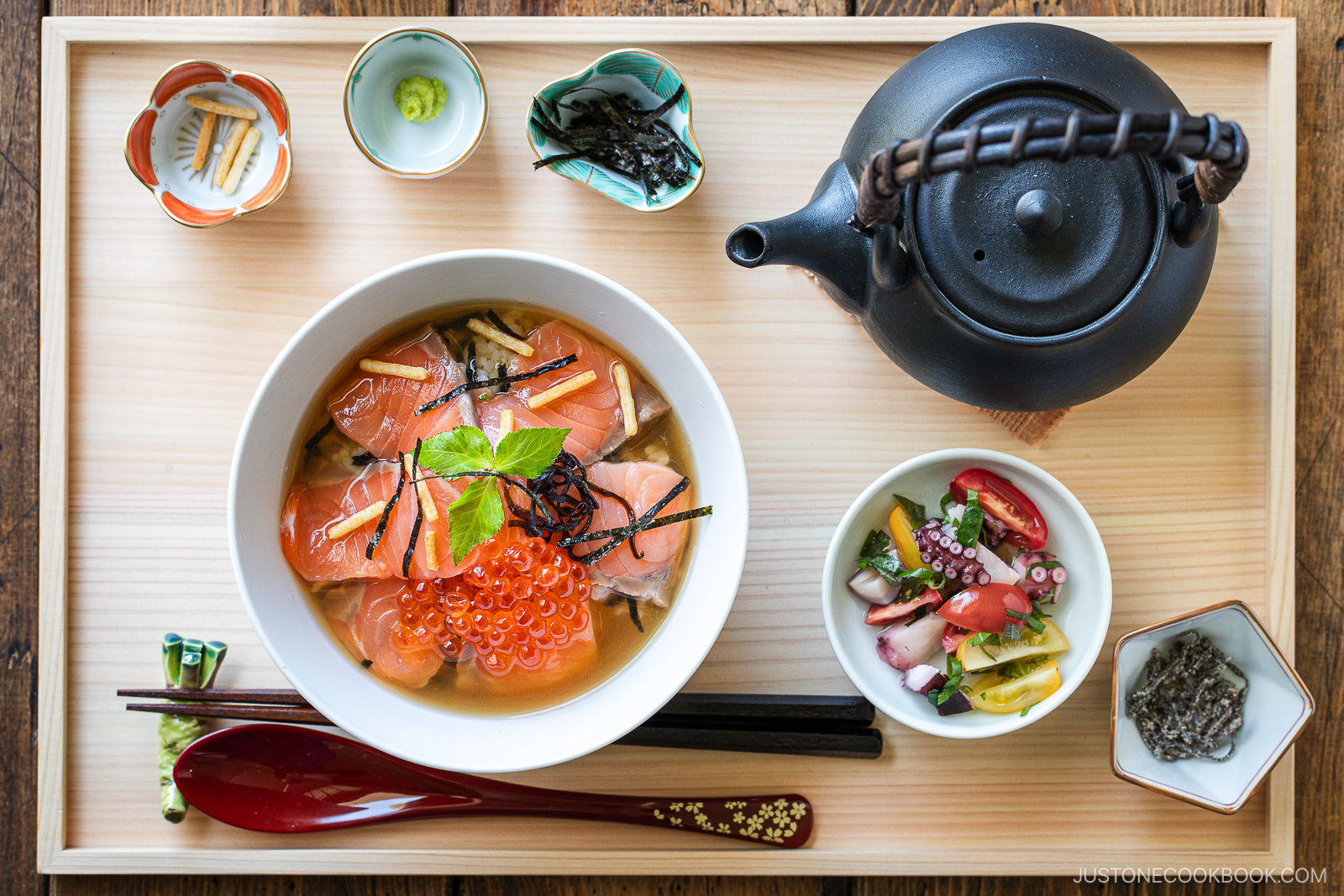
Variations and Customizations
There are endless options when it comes to ochazuke. You can keep it simple by using leftover rice and whatever you have from the fridge! You can also try these fun variations:
- Use cooked salmon. Instead of sashimi, substitute Japanese Salted Salmon or salmon flakes. You could also cook a regular salmon fillet with a pinch of salt or use leftover salmon.
- Switch the roe. Pollock/cod roe (tarako and mentaiko) is popular in Japan.
- Use popular toppings. Try sliced green onions/scallions, toasted sesame seeds, furikake, umeboshi (Japanese pickled plum), and/or wasabi.
- Try green tea. Swap the stock for Japanese green tea (o-cha) like sencha, genmaicha, or low-caffeine hojicha.
- Serve it cold. Why not make refreshing cold ochazuke in the summertime? Use cold dashi broth or chilled, caffeine-free mugicha (barley tea).
- Make a rice ball. For a fun variation, try it with a grilled rice ball in my Yaki Onigiri Chazuke recipe.
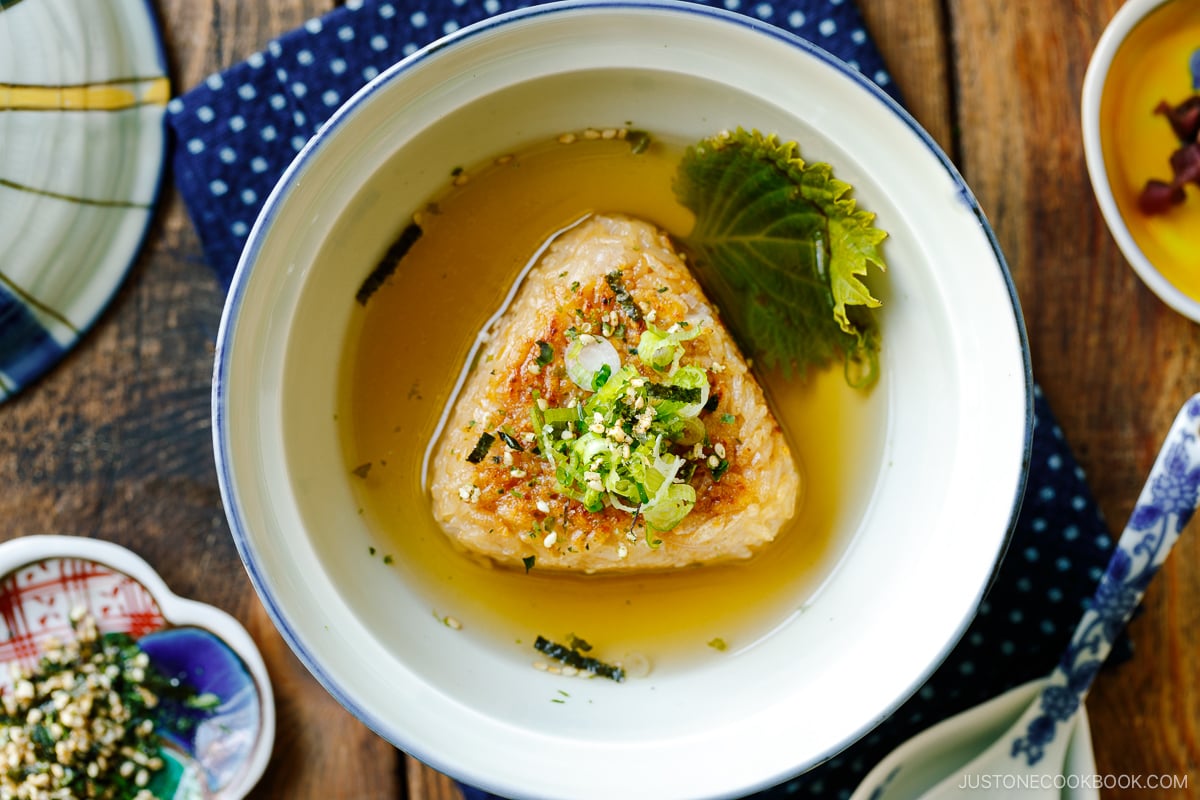
What to Serve with Salmon and Ikura Dashi Chazuke
- With a vegetable side – Kinpira Gobo (braised burdock root)
- With a salad – Octopus Salad
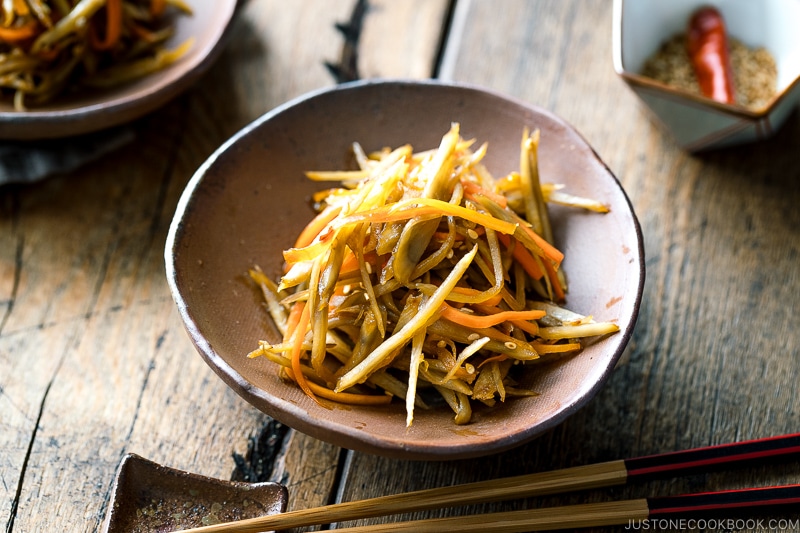
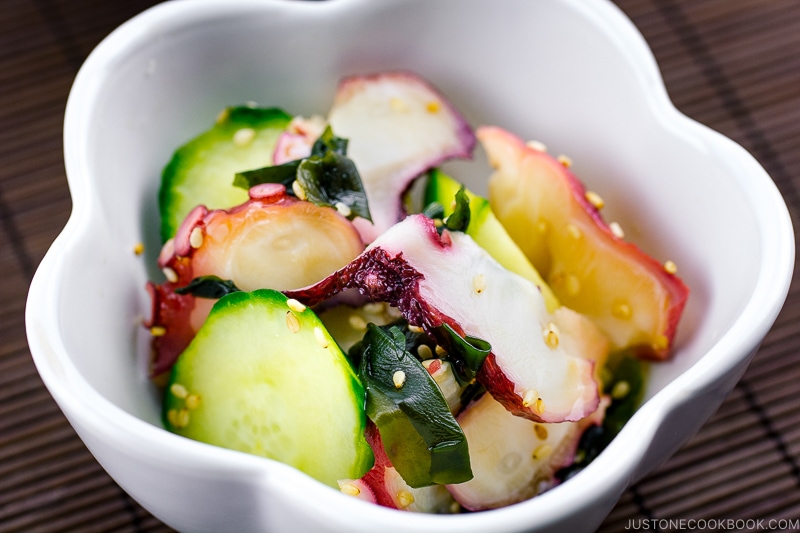
Storage and Reheating Tips
To store: Store the salmon sashimi, cooled dashi, and cooked rice in separate airtight containers. Keep the raw salmon in the fridge with a bag of crushed ice and consume it soon, within 1-2 days. The rice keeps best in the freezer for up to a month. The dashi will keep in the fridge for 3–5 days or in the freezer for 2 weeks.
To reheat: Reheat the frozen rice in the microwave. Gently heat the dashi in a saucepan until hot, but not boiling.
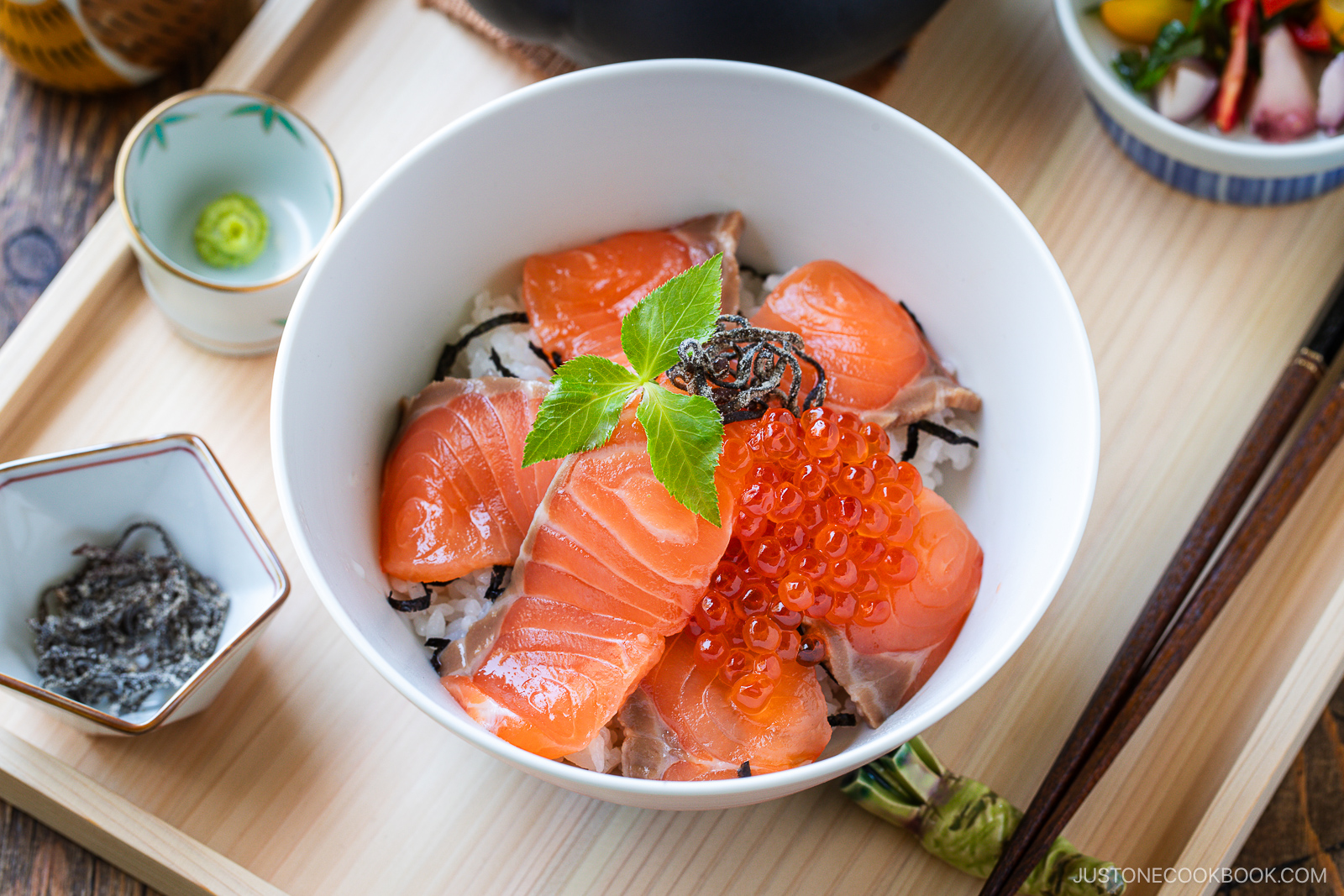
For the Seasoned Dashi Broth
- 2 cups water
- 1 dashi packet
- 2 tsp mirin
- 2 tsp soy sauce (or use usukuchi soy sauce for a lighter broth color)
- ¼ tsp salt (optional)
For the Rice Bowl
- 6 slices sashimi-grade salmon
- 1 serving cooked Japanese short-grain rice
- 1 Tbsp ikura (salmon roe)
To Make the Seasoned Dashi (Japanese soup stock)
Add 2 cups water and 1 dashi packet to a medium saucepan and bring it to a boil over medium heat. Simmer for 2–3 minutes. Squeeze out the liquid and dicard the packet.
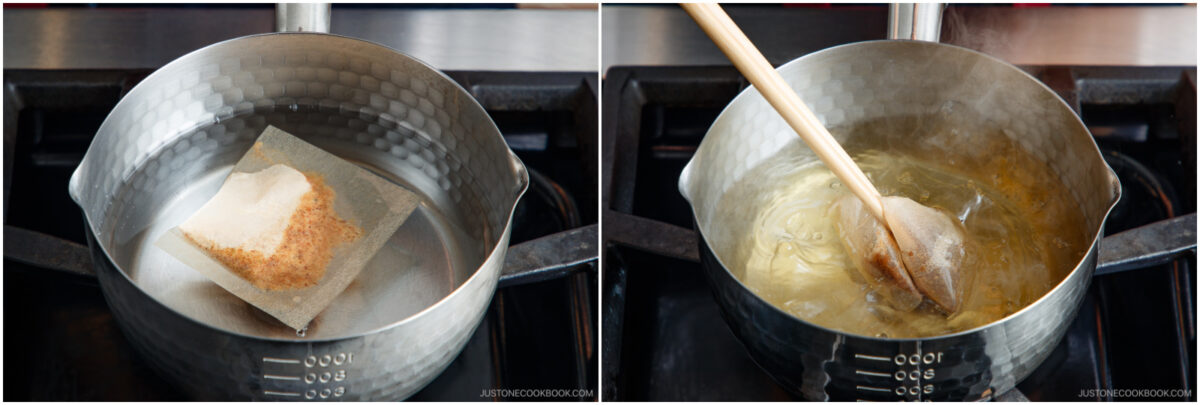
Season the dashi with 2 tsp mirin and 2 tsp soy sauce. Taste and add ¼ tsp salt, if needed.
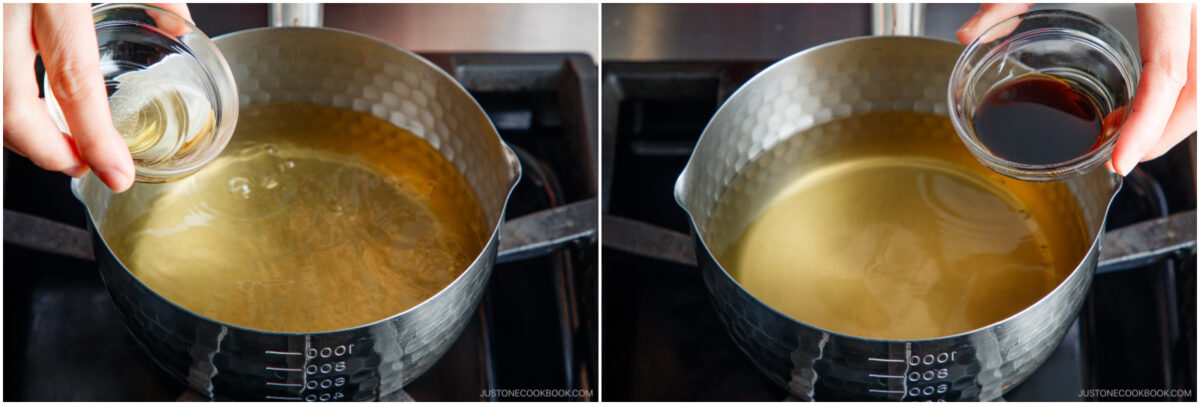
Stir it all together and turn off the heat. Pour the hot seasoned dashi into a teapot, cover, and set aside.
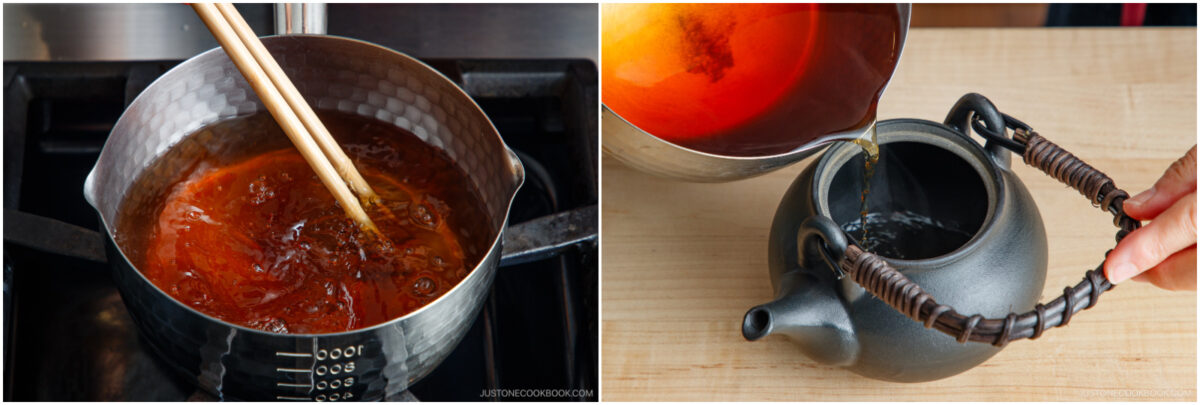
To Assemble the Rice Bowl
Cut 6 slices sashimi-grade salmon with a very sharp knife. The simplest way to slice it is straight down using the hira-zukuri method (read more in my sashimi cutting tips). Start from the heel of the blade and pull the knife towards you, ending at the tip. Nami's Tip: To firm up the flesh so it's easier to slice, place the salmon block in the freezer for 5–10 minutes before slicing.

Place 1 serving cooked Japanese short-grain rice in a donburi (large bowl); I used one from JOC Goods. Let it cool a little bit. Sprinkle ½ Tbsp shredded nori seaweed (kizami nori) on top. Layer the salmon sashimi around the top of the rice.
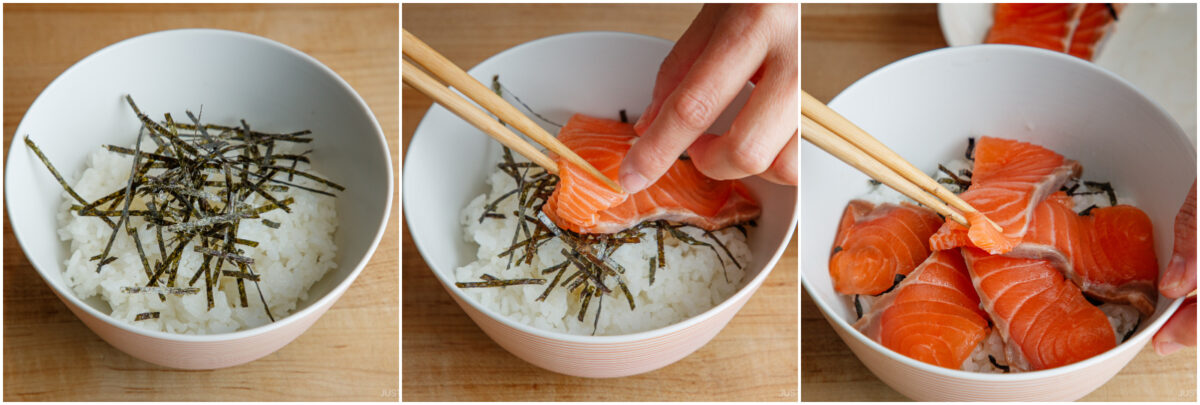
Pile 1 Tbsp ikura (salmon roe) on top. Garnish with optional 1 tsp shio kombu and mitsuba (Japanese parsley).
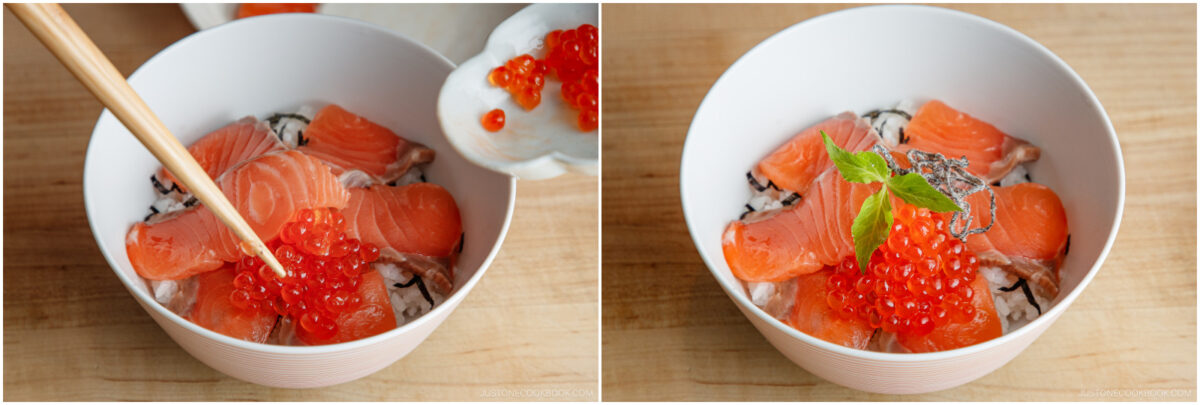
To Serve
Set the prepared rice bowl and hot seasoned dashi on the table. Pour the dashi until the rice is halfway submerged and enjoy. I served it with wasabi, bubu arare (crispy puffed rice topping—I usually buy these in Japan), shio kombu, and shredded nori seaweed on the side.
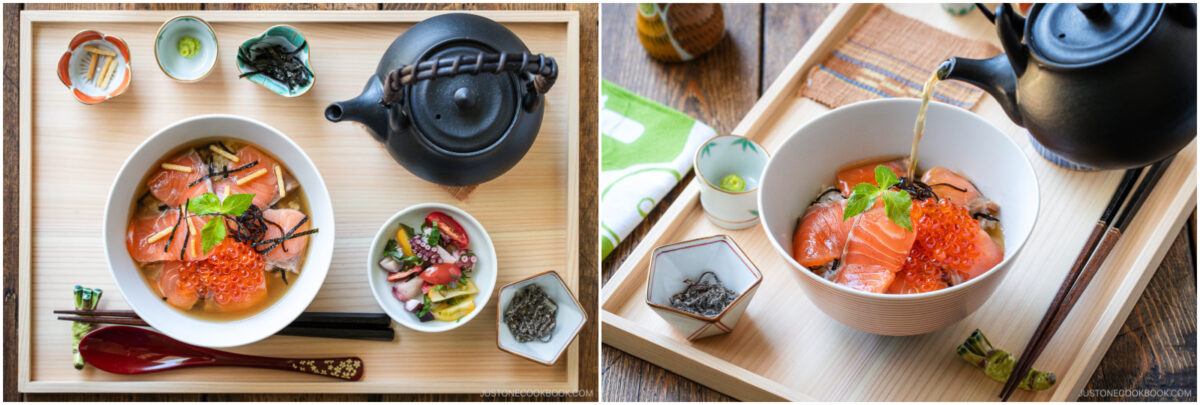
To Store
Store the salmon sashimi, cooled seasoned dashi, and cooked rice in separate airtight containers. Keep the raw salmon in the fridge with a bag of crushed ice and consume it soon, within 1–2 days. The rice keeps best in the freezer for up to a month; to reheat, see How to Store Cooked Rice. The dashi will keep in the fridge for 3–5 days or in the freezer for 2 weeks.
Did you make this recipe?
Tag @justonecookbook on Instagram so we can see your delicious creation!







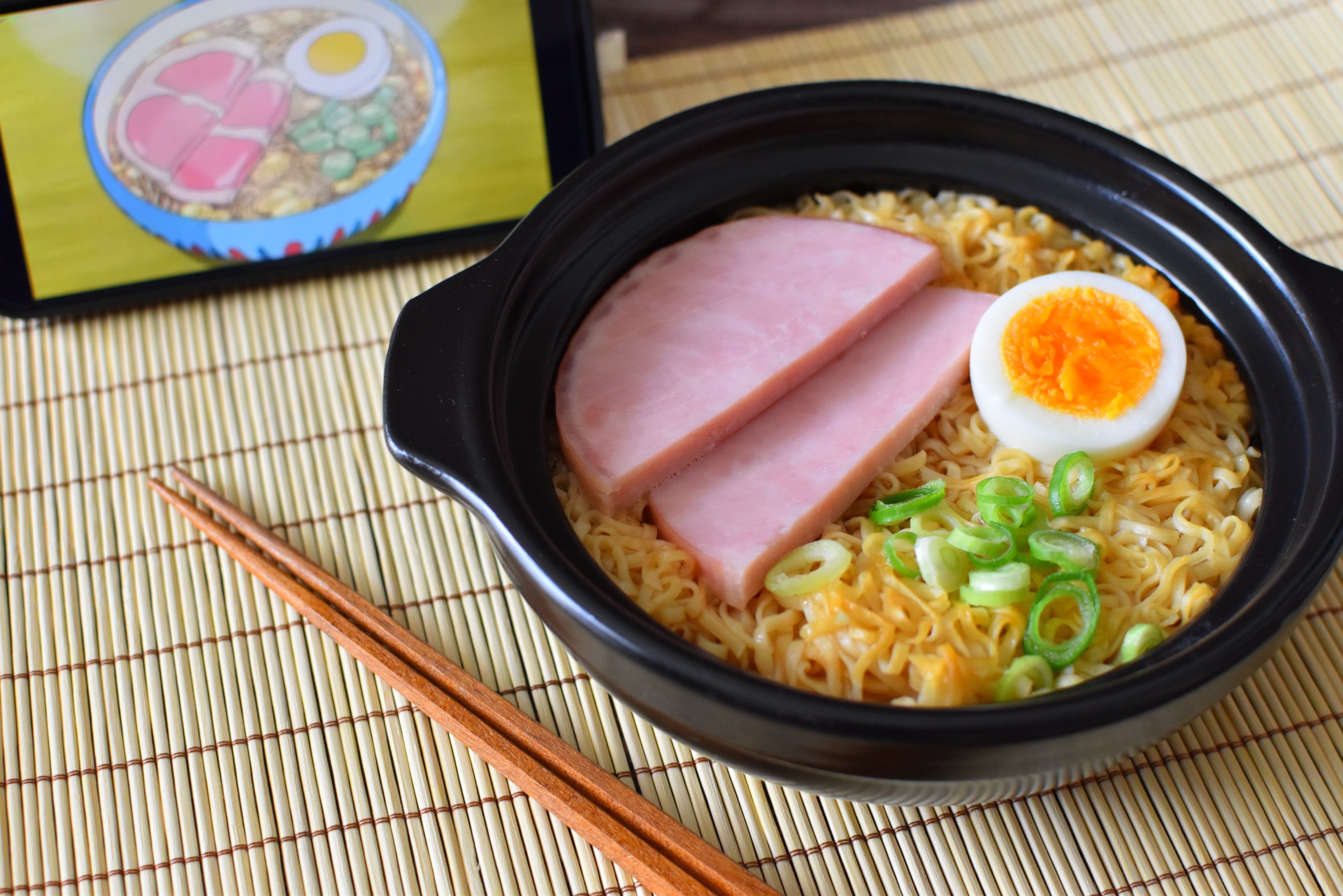



 English (US) ·
English (US) ·